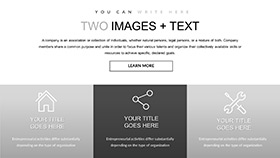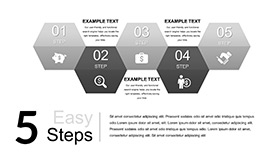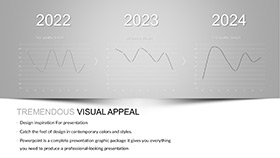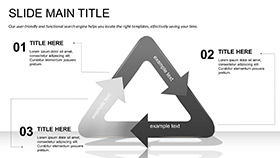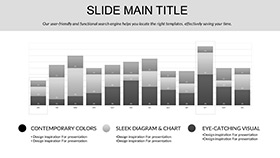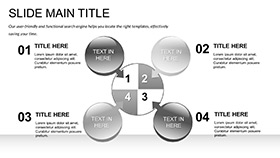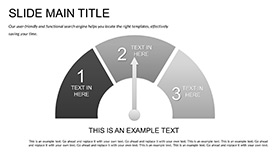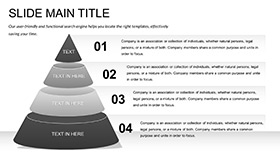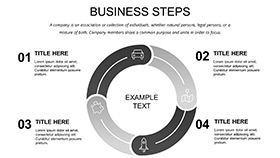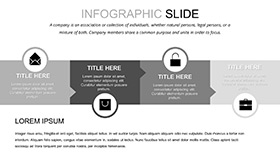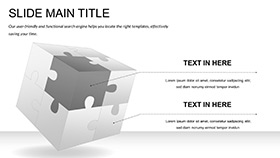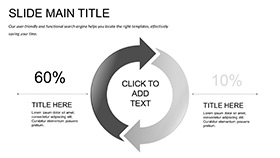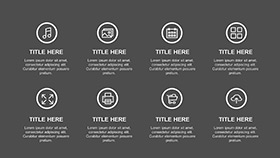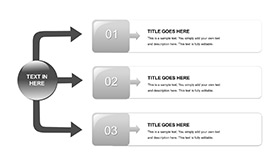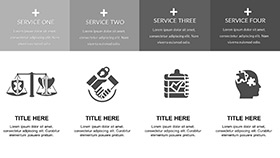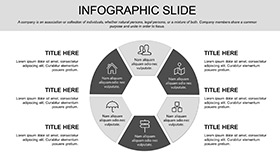In the intricate world of organic chemistry, where molecules twist and bonds form stories of their own, your presentations need to match that complexity with clarity. Enter the Organic Chemistry Tutor PowerPoint Template, a lifeline for educators and students alike who want to demystify reactions without the design headache. Tailored for classroom lectures, study sessions, or virtual tutoring, this template turns abstract concepts like nucleophilic substitutions into digestible visuals that stick.
Frustrated by clunky diagrams that don't scale or colors that clash with your notes? This template solves that with 28 pre-built diagrams, each honed for chemistry's visual demands - from skeletal structures to energy diagrams. Its clean, modern layout keeps the focus on learning, not layout tweaks, making it ideal for busy tutors prepping for midterms or professors illustrating enzyme mechanisms. Priced at $22, it's a small step toward bigger breakthroughs in student comprehension.
Essential Features Tailored for Chemistry Educators
What sets this template apart is its educator-centric build. Three master slides provide a unified framework, while three background options - soft neutrals with subtle lab-inspired accents - create an inviting learning space. The star is the diagram library: 28 slides spanning reaction pathways, molecular models, and periodic trends, all in seven color schemes for thematic variety.
- Vector Precision: Every shape and line is editable, so you can annotate a benzene ring or adjust bond angles on the fly.
- Integrated Icons: Lab beakers, flasks, and atom symbols ready to drop in, enhancing explanations without extra hunts.
- Multimedia Support: Embed molecular simulation videos or audio narrations to bring stereochemistry to life.
Fully compatible with PowerPoint 2016+, it integrates with tools like ChemDraw exports, letting you paste structures seamlessly. This isn't just a slide deck; it's a scaffold for deeper understanding.
Customizing Diagrams Step by Step
- Choose a base diagram, such as the arrow-flow for SN1 reactions.
- Edit text boxes for reagents and products - use the formula font for accuracy.
- Select a color scheme to highlight electron movement, like reds for nucleophiles.
- Add entrance animations to reveal steps progressively, mimicking lab progression.
This method empowers even novice users to create pro-level visuals, turning prep time into teaching time.
Practical Use Cases in Organic Chemistry Teaching
Envision a tutor guiding undergrads through aldol condensations: Layer this template's timeline slides with custom mechanisms, using curved arrows via editable paths. Students grasp the sequence intuitively, echoing how experts like those in ACS publications structure their educational decks - precise yet approachable.
For lab reports, the data tables and graphs slot in experimental yields, while pie charts break down functional group distributions. In group study sessions, radial menus organize solvent effects, sparking discussions that reinforce retention. High school teachers adapt it for intro units, simplifying hybridization with layered spheres that peel back on click.
Online platforms amplify its reach - pair with Zoom polls for interactive quizzes on the embedded charts, making remote learning as engaging as in-person.
Pro Tips for Classroom Impact
Align visuals with learning objectives: For visual learners, amplify icons; for kinesthetics, add build animations. Unlike basic PowerPoint, this template's chemistry-specific layouts prevent distortion, ensuring bonds look authentic under scrutiny.
Workflow Integration for Tutors on the Go
Start by opening the .pptx in PowerPoint, then drag in your syllabus outline to populate the agenda slide. Link Excel data for real-time yield calculations in bar graphs, and export to PDF for handouts. Collaboration shines via shared links, where co-teachers tweak examples without version chaos.
Explore our education templates for complementary sets on biochemistry. It's designed to fit your rhythm, from quick reviews to full-semester arcs.
Elevating Lessons with Purpose-Built Design
The template's subtlety - crisp sans-serifs for labels, balanced whitespace - mirrors a well-run lab: efficient and enlightening. For tutors, it means less time formatting, more time mentoring. Customize it today and watch your organic chemistry sessions ignite curiosity.
Frequently Asked Questions
Are the molecular diagrams scientifically accurate?
Yes, bases are drawn to standard conventions, with editable elements for precise adjustments like bond lengths.
Can I add my own images or videos?
Absolutely, slides support high-res inserts for spectra or animations of rotations.
What if I'm using Google Slides?
While optimized for PowerPoint, export to Google via .pptx for most features, though animations may vary.
How many color options are there?
Seven schemes per diagram, from vibrant for student notes to muted for formal lectures.
Is customer support available for edits?
Basic guidance is in the included notes; for advanced, check our education category resources.









